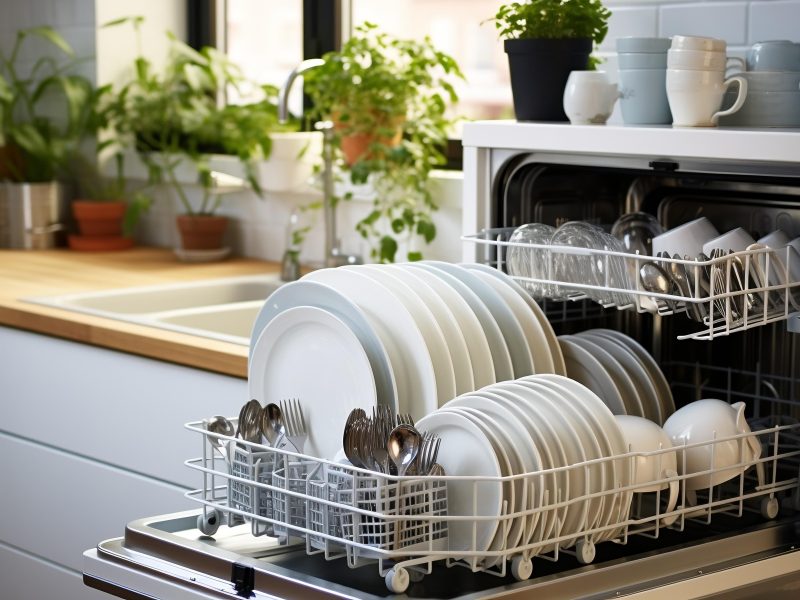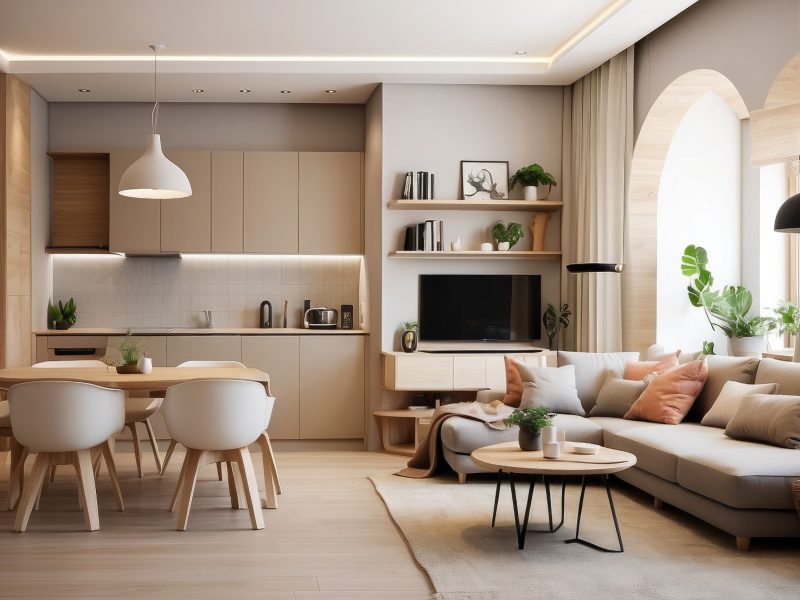You will find several types of beds available, at various price points in the market; pick the right size, shape, material and design for your personal space
Considering that we spend about a third of each day in bed, it is vital to pick the right one in order to get sound sleep and avoid sore backs, stiff necks, and a host of other problems. A good bed should be of the right size and shape, and should meet the specific needs of the sleeper. They say when shopping for a bed, don’t just look at it, lie on it.
The market is abuzz with a variety of options. Today the Indian customer can choose from a myriad of brands ranging from traditional Indian to modern Italian, with designs to suit every preference such as industrial, transitional, mid-century modern bed–the whole lot.
Post pandemic, the preferences are veering towards bigger beds with storage boxes and comfortable headboards. Hussaine Kesury, Chief Category Officer, Pepperfry, says the pandemic and the ensuing lockdown got consumers to actively and consciously spend on improving their furniture, décor, and furnishings in a way that addressed their multi-functional, evolved homes, as well as their shift to a healthier lifestyle. He says at Pepperfry, consumers opt for varied headboards, from the upholstered to the standard non-padded ones.
Says Kesury, “Standard non-padded headboards that rise 8-10 inches above the mattress (non-storage, no shelf) are quite popular. They are practical and easy to maintain. The height of the headboard should be measured from above the mattress, not from the base. There are no specific norms for headboard height, but the thumb rule is to have one that is shorter than the length of your bed.”
Type of beds
The most common type nowadays is the platform bed, which comes in various designs, styles, fabrics and customisable colours to suit most interiors. Platform beds sit very low off the floor, so if you need more space under your bed, you might have to buy risers. They are boxy and work regardless of a box spring. One can put them in a big or small room depending on what size one chooses.
Poster beds offer the utmost privacy, given the curtains that envelop them. They provide an air of drama, luxury and love, and apart from their stunning designs, they provide plenty of storage in their large boxy bases.
When it comes to design aesthetics, there are different styles, ranging from modern, to mid-century modern, to contemporary, to transitional (a blend of modern and traditional furniture, finishes, materials or fabrics). Then you have the traditional styles that take inspiration from indigenous arts and craft originating from the Indian sub-continent or certain style periods pertaining to the early Baroque and French eras. The industrial style depicts a raw, unfinished, earthy and elemental look, while mission style beds are beautiful, versatile pieces that can serve as an eye-catching centerpiece in any bedroom.
What distinguishes a regular bed from a premium one is quality, choice of materials and technical details. Says Suman Sharma, Principal and Head of Business, Mangrove Collective, “Much of what distinguishes a premium product from a regular one is governed by craft, material choices, and joinery details. At Mangrove, we highlight craftsmanship, attention to detail, and ergonomic comfort and explore multiple material combinations to develop beds for contemporary living. A luxury bed can be distinguished from a regular bed by the extent of customisation it has undergone. For example, bed dimensions are often conceptualised for the user’s specific requirements instead of the standard sizes of a regular bed. In addition, the structural details are tailored to accommodate the mattress choice. The owner’s aesthetic sensibilities may also find expression in the design of the bed.”
Pricing depends on the quality of materials used to make a bed and its finish – factors such as whether it’s an upholstered bed in leather or fabric, wooden beds in veneer or a solid colour, beds with wood and wicker – all influence pricing. At Pepperfry, beds range from Rs 5,000 to Rs 1.5 lakh while at Godrej Interio, you can opt for basic single bed to a luxurious king size bed from Rs 12,000 to Rs 1.2 lakh.
What’s trending
Upholstered beds which come with light padding and fabric that gives it a textural appeal are much in demand. They could have velvet, leatherette, suede or simple fabric upholstery, typically with tufted or straight streamlined headboards. Upholstered beds never go out of fashion and consumers can choose the texture and colour of the fabric as per their home interiors.
Ajay Arya, Founder & Interior Designer, A Square Designs, says beds with upholstered headboards for comfort are bestsellers, and that most people prefer a standard king-sized bed with a mattress size of 6 ft x 6 ft 6 inches.
Customised beds are a big thing in the HNI segment. Arya says his firm does customised pieces that are a bit edgy like inserts in metal, semi-precious stones, and good quality leather for upholstery.
Beds with boxes are hugely popular. Storage comes in the form of box storage, front/side drawer storage, full/half hydraulic storage across a range of product material like engineered wood, sheesham wood, and metal.
All of these come in varying sizes like king-sized, queen-sized and single beds. At Godrej Interio, modern style queen-sized beds with box storage are quite popular, followed by king sized beds, and beds with hydraulic storage.
Says Anupriya Sahu, Founder and Design Head, Alankaram, “The Indian market looks for utility in design, which is why bed boxes are popular. With passing trends, classic wooden furniture stays true to every Indian’s heart.”
Headboards are starting to become the preferred choice among consumers. However, the colourful matt patterns have replaced glossy mono-tonal textures, and defined shapes have been superseded by curves and free-form asymmetrical pieces.
An emerging category in beds is the homecare ones designed to make space for healing. They keep the patients safe during caregiver interactions and allow for uninterrupted, peaceful periods of rest. Says Subodh Mehta, Senior vice president (B2C), Godrej Interio, “Earlier, care at home was limited to either geriatric patients or those suffering easily treatable illnesses. The ongoing pandemic with its newer strains has introduced a further nuance to the growing preference for home care. People are looking for homecare beds and in order to address this need, we recently launched the ‘Grace Homecare Bed’, whose back rest and leg rest can be electronically adjusted with a hand control device, facilitating ease of movement and enabling alternating between sitting and reclining postures. The prices for this range from Rs 80,000 to Rs 1 lakh. Considering varying levels of patient mobility, the bed has been designed to deliver utmost safety and stability in all positions and enables better health for the caregiver and the patient.”
Space constraints often drive people to buy multi-functional furniture. In the case of beds, many who want minimalism at home or can’t afford much space, tend to buy pieces such as sofa-cum-beds and bunk beds.
Bed selection
When choosing a bed, it is important to consider the size of the room it will occupy, as well as the age and requirements of the user. Kids’ beds will need to factor in safety while adults’ beds will need to be of a certain height and size for adequate comfort.
Says Godrej Interio’s Mehta, “While choosing a bed, one should prioritise one’s requirements in terms of size, colour, design, comfort etc. The size of the bed is determined by the size of the mattress it can accommodate. The best thing one can do is avoid guesswork and take down the dimensions of their bed before buying. There should be ample circulation space around the bed and the hinged panels of the wardrobe and drawers should open freely. Also, all the furniture units, including beds, should be compatible with the theme or design of the room. It’s important to consider climatic conditions before choosing the right material for the bed. Having additional features like added storage area or multi-functionality can be considered as a bonus.”
Some common mistakes people make while buying beds can be avoided. Alankaram’s Sahu says people often choose the wrong size for a particular space or use incorrect linens or fabrics that require too much maintenance. They also end up buying wrong sized rugs that are either too small to provide utility or too large that they fold against an edge. Matching bedroom sets limit the tendency of homeowners to experiment and switch up seasonal styles. Incorrect lighting above a bed or harsh spotlights falling directly at eye level can be discomforting. Incorporating dark, heavy and bulky furniture pieces in a relaxing bedroom space should be avoided.
Does the type of bed, mattress, pillow impact the quality of one’s sleep? Sleeping on a medium-firm mattress, especially with adjustable firmness, promotes comfort, proper spinal alignment and quality sleep.
Says Dr Farah Ingale, Director-Internal Medicine, Fortis Hiranandani Hospital, Vashi, “The sleeping thermal environments, including the mattress and bed equipment (sheets, blankets and pillows), play a role in sleep quality. One survey found that seven per cent of sleep problems were related to an uncomfortable mattress contributing to poor sleep quality or physical discomfort. Moreover, several studies indicate that a mattress with ergonomic standards could improve sleep quality. In other words, a mattress should support the healthy curvature of your spine, shouldn’t cause you to get too warm, and should fit your budget and different needs.”
She recommends spending at least 15 minutes in your usual sleeping position if you are seriously considering buying any mattress. Also, sleep hygiene is very essential.
Finally, put down electronic devices and avoid blue light for at least an hour before bedtime.
Table: Indicative prices of different kinds of beds
|
Type |
Price range |
| Queen-sized beds | Rs 8,835-1,09,720 |
| King-sized beds | Rs 9,741-1,24,930 |
| Single beds | Rs 6,479-40,499 |
| Upholstered beds | Rs 16,499-97,450 |
| Folding beds | Rs 4,299-22,319 |
|
Poster beds |
Rs 56,999-1,55,705 |
| Sofa bed | Rs 10,925-1,20,175 |
| Bunk bed | Rs 15,029-1,07,499 |
Credit: Pepperfry




